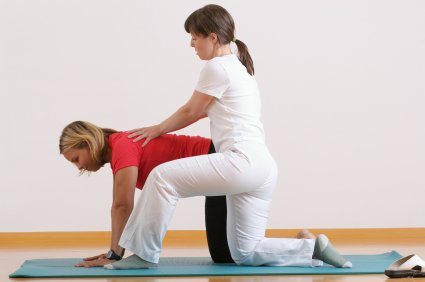View basket (0 items $0.00)

New Study: Yoga Therapy Helps Stroke Victims Recover More Fully
Stroke is one of the leading causes of disability in the U.S.; with more than 4.7 million stroke victims alive today. Many people don’t fully recover from a stroke and functional recovery plateaus after five months. According to a new study, however, yoga therapy may people recover more fully and help stroke victims regain neuromuscular integration beyond what can be accomplished with traditional physical therapy programs.
According to the study, after eight weeks of yoga, participants improved in both balance and flexibility. They also exhibited a stronger and faster gait, and increased strength and endurance.
The study was conducted by researchers from the Richard L. Roudebush VA Medical Center in Indianapolis, Indiana University-Purdue University Indianapolis and IU Bloomington. It involved older veterans, who were recovering from stroke, who had already completed the traditional post-stroke occupational and physical therapy, but who continued to have impairments.
According to Arlene Schmid, rehabilitation research scientist at the Roudebush VA Medical Center and principal investigator of the study, the loss of functional strength, flexibility and endurance common after a stroke, often leads to long-term disability. Five million Americans are living with the consequences of stroke, which often leads to limited mobility and reduced participation in society.
Her analysis, "Physical Improvements After Yoga for People With Chronic Stroke," showed that people in the yoga group increased in both functional strength, flexibility and endurance as a result of the yoga. Schmid speculated that the yoga program might have "improved neuromuscular control, likely allowing for strength improvements in affected limbs, sides or areas of disuse."
In a separate analysis, Tracy Dierks, associate professor of physical therapy in the School of Health and Rehabilitation Sciences, looked at the effects of yoga on how well people could walk after the program.
In his report "The Effect of Balance Exercise Therapy on Gait Parameters in Individuals With Chronic Stroke," he shows that the stroke victims participating in the yoga program improved both in balance and gait speed, taking longer steps or strides, an indication of greater neuromuscular integration.
"The gait findings from our study have the potential to greatly impact clinical practice for gait recovery," Dierks said. "The yoga intervention was designed to improve balance, not gait; we did not focus on improving gait at all. Yet we saw major improvements in most clinical gait measurements. But one often overlooked deficit remained: the inability to sustain gait speed for endurance."
Schmid recommended in her presentation that it might be appropriate to include yoga in the in-patient or out-patient rehabilitation people receive after a stroke. Such a class should be taught by a yoga therapist who has had additional training in anatomy and physiology and how to work with people with disabilities.
Dierks discussed his findings during the gait session. Co-authors are Peter A. Altenburger, IUPUI, and Schmid and Kristine K. Miller, Roudebush VA Medical Center.
Schmid discussed her findings during the session on cardiovascular system, cardiovascular disease management, children and the elderly. Co-authors are Miller, Linda S. Williams, Erin DeBaun and Teresa Damush, IUPUI/Roudebush VA Medical Center; Marieke Van Puymbroeck, IU Bloomington; Dierks and Altenburger, IUPUI; and Nancy Schalk, Heartland Yoga.
Featured Courses








